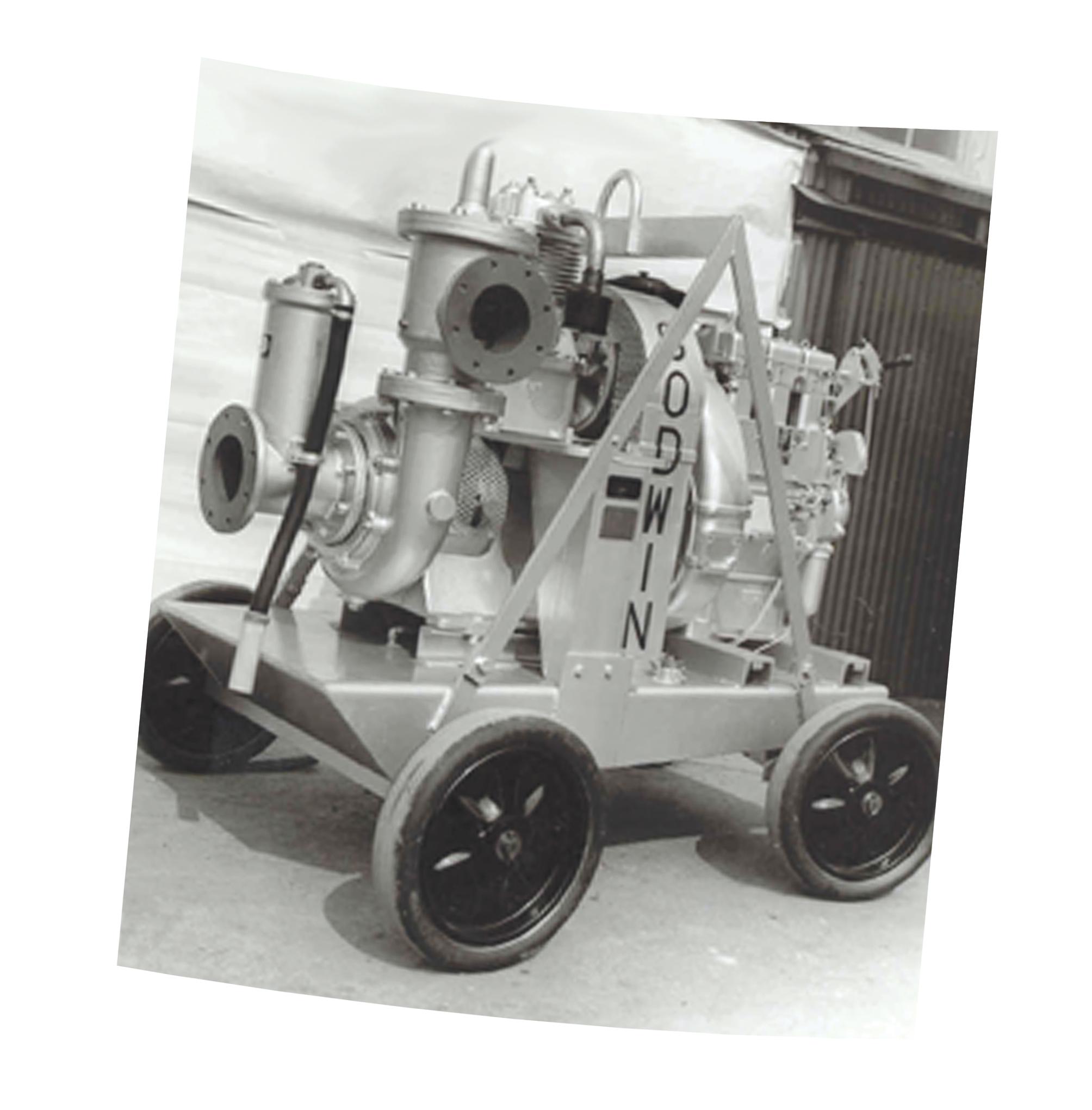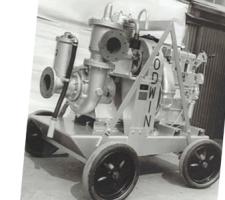
When Godwin Pumps launched it's new Dri-Prime pumps 40 years ago, it did not expect the range to still be in production today
When a company launches a new product, it hopes that it will prove popular with the market but few can predict the longevity of an innovation. However, the simplicity of some designs means that they quickly become established and are not superseded by new technology.
While the company may be celebrating the ruby anniversary of its flagship product, the history of the company goes back much further. Godwin Pumps started out in Quenington, UK, in 1865 as a family-owned house building company. Over the course of three decades, the company moved into well boring and pipe laying. But in 1886, under the direction of Harold Joynes Godwin, the business began building pumps to support its work. The company carried
on under Godwin until the 1960s, when it was sold to the John James Group of Bristol.
"At this time managing director Jack Parker issued an edict to technical director David Saunders to begin work on a fully automatic priming system, the foundation of what would later become our Dri-Prime pump," said Godwin president John Paz.
In 1968, the first prototype was created by Saunders and his development team and they fitted the priming system to a T6/HR2 pump. Over the next two years, the development team engineered the pump for production and in 1970 the first DPC6 and MC3 Dri-Prime pumps rolled off the assembly line and were sold to Scottish Land Development (SLD).
New materials improved the reliability of the pumps but essentially the design remained unchanged when the CD - contractor dewatering - and HL - high lift - models were launched in 1980. These models also included a close coupled design allowing the pump shaft to directly mount to the engine flywheel. This new approach eliminated shaft misalignment previously associated with rental units being abused in the field, and provided more reliability for portable pumps.
The current range was launched in 1985 and added an oil bath seal mounted behind the impellor to the design. This limits abrasion by protecting the seal's working parts from coming into contact with the liquid being pumped, as well as allows for dry running without overheating or failure.
It was the innovation of the Dri-Prime pump that led to Godwin's current owners, the Paz family, acquiring the operation nine years ago. US-based John Paz, Sr ran a construction company in the late 1960s and early 1970s and regularly used dewatering pumps but was frustrated by the reliability of manual priming pumps used in his building projects. Intrigued by an alternative to manual primers, Paz Sr. and his son John travelled to England in 1976 to tour the Godwin Dri-Prime manufacturing facility. The two men returned to the US with exclusive North American distribution rights for the Dri-Prime pump, which led to the creation of pump rental operation under the name of Godwin Pumps of America. At the same time Dri-Prime factory in Quenington was purchased by the Wolseley Group but was later acquire by Paz in 2001, restoring it as a family-owned business.









